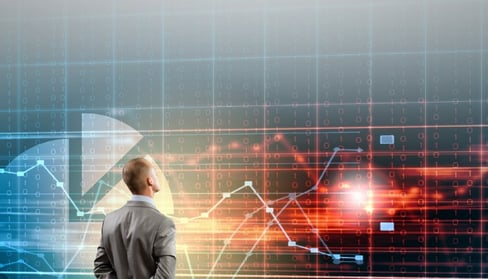 The world is becoming more connected, now remote machines have chips in them to allow them to connect with a remote engineer, a support desk or an individual.
The world is becoming more connected, now remote machines have chips in them to allow them to connect with a remote engineer, a support desk or an individual.
This might be a ATM machine by satellite in Saudi Arabia or a remote town in Africa, communicating with is bank for replenishment; it might be an aircraft engine sending back telemetrics to a service centre in central England to trigger maintenance planning or it might be a coffee machine in a service station broadcasting a replenishment signal to a fulfillment centre in a Logistics company.
Truth is, last year most of these would have some element manual human intervention, watching for significance. In more recent times some of these technologies will move to a machine generating a signal which is sent to a different machine which then generates a "machine based intelligent response".
Sounds exciting? In fact to me it still feels a little too 21st Century, maybe even a little StarTrek ("to boldly go"), but that is the way things are heading. This is what people are talking about as the Internet of things, this is enabled by that global, always on, always available, remotely powerful, pervasive Web to the World, the Internet.
Machines will be talking to machines, sensors will generate signals that are broadcast to machines, that will be interpreted by rules that will generate machine based learning responses. The key to keeping these systems stable is to understand "What is normal and what is exceptional", what requires an automated response and what needs more information or needs a more complex solution than the rules allow? Namely what is significant?
Take for example consider the three machine based signals mentioned earlier
- An ATM in Africa has a rush on cash being consumed, an emergency replenishment will be required to ensure continued cash availablity, but what caused the rush; Is this a step change, have a number of new users and customers moved into the area or was this some kind of special event? Should the frequency of cash cartridge deliveries be increased to avoid future emergency deliveries that could potentially arise?
- With regard to a Engines on a plane; a signal arrives that communicates engine performance reducing - particularly during cruising at high altitude, which means fuel efficiency is impacted and suggests some fuel filters may need replacing. If the alternative planned routing of the plane can be through a location where the qualified engineer and the the right filters are available, the plane could be scheduled through this location, then impact on plane availability can be significantly reduced without compromising flight safety.
- With regard to coffee machine replenishment (a subject dear to my taste habits); What happens if demand for a vanilla flavour significantly increases on a automatic coffee machine, again like the ATM is this a step change or an anomalous event? What should the response be, how should replenishment be re-organised, how should inventory be re-positioned?

All of these can be supported by advanced algorithms. All of these scenarios can have advanced probabilistic and stochastic approaches that can analyse the data and automatically respond with intelligent solutions, whilst also triggering alerts to smart phones to ensure supervisory awareness. The key to this is to understand significance. With the Internet of Things just around the corner, with the Hub of all things not that far away much of this is already not only possible, but already here and imple
mented and it will not be long before this is the norm rather than the exception.
- What machines are you seeing connected?
- How do you measure significance?
- How do you define exceptions?
- At what point do humans need to intervene?
- How do you protect you and the business against risk and failure?
- Is this a concern?
- What opportunities arise from this "brave new world"?
Want to know more about systems and thinking that can help you?
Dave Food
